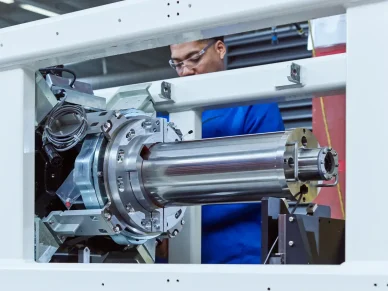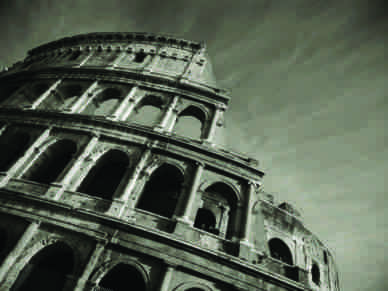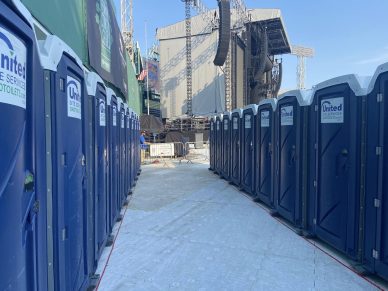Cuebric’s generative AI can bring artists’ dreams to life
To understand the impact generative AI will have on the creative arts, you have to look back to the invention of photography, says Pinar Demirdag.
Photography forever changed every profession, says Demirdag, co-founder and AI director at production studio Seyhan Lee, the creators of AI image generation and editing tool Cuebric.
“Photography also gave birth to celluloid film, which is motion pictures,” she told BOSS. Before that, “people had to rely on the interpretation of the artist.”
Visual storytelling relied on the interpretation of the person painting or sketching a scene. Photography could generate images much more quickly and without as much effort, yet it remains an important art form that has spawned countless creations.
“If there’s ever a way for humans to save sweat, why would they not do it?” Demirdag said.
A New Relationship to Tools
Before the advent of generative AI, humans had a very linear relationship with tools.
“I feel like writing, I pick up my pen. I feel like putting lipstick on my lips, I pick up my lipstick,” Demirdag said. “These tools serve a purpose and then we leave them.”
But with generative AI, for the time the tool is creating results while humans supervise. That leads to a lot of questions about what is creativity and what is creation, she said.
Cuebric uses stable diffusion, a generative AI model developed at Ludwig Maximilian University in Munich, commercialized by Stability AI, and now an open-source algorithm. Cuebric also rotoscopes and upscales images on AI.
Cuebric users can upload images, and it will automatically segment the images and present user-friendly image editing options. Or, users can get more creative and prompt Cuebric to translate a vision into a two-dimensional manifestation.
“What Cuebric enables is the manifestation of a filmmaker’s vision in their head,” Demirdag said, “right in front of final pixel-ready filmable content in a span of minutes. This is unheard of.”
In other words, if you can dream it, Cuebric can produce the image. It uplifts a concept to final pixel, which saves enormous amounts of time and effort. If you want a scene on a distant planet with palm trees and pyramids in the background, Cuebric can make it. Decide you want obelisks instead of pyramids? Simply brush away the pyramids and type in obelisks, and Cuebric will make the change.
“So it will take you 10 seconds to execute the vision of the director.”
To do that successfully, however, requires an experienced prompter. It takes some trial and error, but within a few days a prompter can get a feel for how Cuebric interprets prompts and become quite skilled with the tool.
Don’t Lose Humanity
As AI becomes an integral part of the creative process, we should not lose sight of the power of human creativity. Cuebric can interpret the cue of a human, yes, but it’s the skilled prompter who is using a tool to create art.
“We should never forget that we model our tools after ourselves,” Demirdag said. “If we do not go through a self-inquiry period where we wake up to own power and potential as human beings, how can we model our tools to serve the full potential of human beings?”
Anyone working with AI and especially highly advanced tools like generative AI should ask themselves these questions, she said: “Are you making the tools to annihilate humans, to make decisions instead of you? Do you not trust yourself enough that you want to rely on an emotionally devoid battery? Or are you making the tool to uplift the burdens from your shoulders so that you as a visionary can focus on your creation and vision?”
There is always a quality of what Demirdag terms “god-finding” in artisanship. True artisans lose themselves in the flow of creation, and that will always remain.
That’s why people will still pay hundreds of dollars for handbound copies of books they could buy online for a few dollars, for example. The human ingenuity and creativity that goes in makes the work special.
In the Works

Seyhan Lee announced the imminent launch of Cuebric in December and within a month had more than 150 requests to test it. The list included advertising agencies, production companies, film studios, virtual art departments at creative studios, content creators, visual effects artists and studios, virtual production stages, even an investment bank in Switzerland that flies investors in for presentations.
“The list really is infinite,” Demirdag said. “Anybody that has creativity or access to an LED stage or is part of any film production pipeline is interested in Cuebric.”
Seyhan Lee has partnered with XR Studios, which specializes in extended reality for live entertainment. It was at a visit to XR Studios that Demirdag and co-founder Gary Koepke first thought of bringing the worlds of generative AI and filmmaking together.
“They told us that they are always interested in pushing the boundaries of possibilities, and they offered to be our launch partner where they give us the tool set to experiment on how to develop a tool that is best serving virtual production stages.”
Cuebric also has a collaboration in the works with Fuse-TG, which built virtual production stages for the Mandalorian and popularized the technology.
It will be a blast to see where Cuebric and generative AI can take creative media. As long as we remember it’s humans doing the leading.




















Leave a Reply